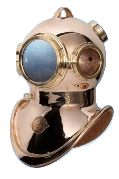Have the standards changed?
When I took AOW in 1995, deep was 60-100fsw. PADI/SSI had an operational max depth limit of 60fsw for OW divers. The deep cert was to extend the student's max bottom to 100/120fsw.
**disclaimer** I answered Are you Nitrox certified?
Mike
Deep Specialty is actually to 130 fsw, but otherwise, yes. PADI's Training limits are 60' for OW, 100' for AOW, and 130' for Deep.
Technically, you're only certified to the conditions and limits you were trained in, but slowly expanding the range as you gain experience is how it's supposed to be done. That said, many dive ops limit the dives they will take OW divers to to sites that are 60' and less, unless they have AOW.





